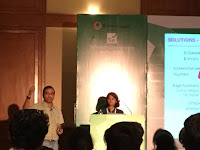JSON is a great way to specify data / information and, off late, it is the format of my choice to specify test data.
I find it to be -
Recently, thanks to a friend - Abhijeet Vaikar, I came across a tool - quicktype.io - that helps in transforming the raw JSON (from various sources) directly into custom objects, in a variety of languages.
Site: https://quicktype.io/
The tool: https://app.quicktype.io/
I got to know about this tool at perfect time as I am building a new tool for dynamic logging in Java - AutoLogJ (but more about AutoLogJ later). quicktype.io does what it promises - and it saved me a lot of time to build the custom POJOs for the same.
Thanks Abhijeet Vaikar and the quicktype team!
I find it to be -
- light weight
- easy to understand
- almost very intuitive to know if you have made an error in the syntax
- easy to read into code and parse
- easy create meaningful custom objects and use in code
Recently, thanks to a friend - Abhijeet Vaikar, I came across a tool - quicktype.io - that helps in transforming the raw JSON (from various sources) directly into custom objects, in a variety of languages.
Site: https://quicktype.io/
The tool: https://app.quicktype.io/
I got to know about this tool at perfect time as I am building a new tool for dynamic logging in Java - AutoLogJ (but more about AutoLogJ later). quicktype.io does what it promises - and it saved me a lot of time to build the custom POJOs for the same.
Thanks Abhijeet Vaikar and the quicktype team!








